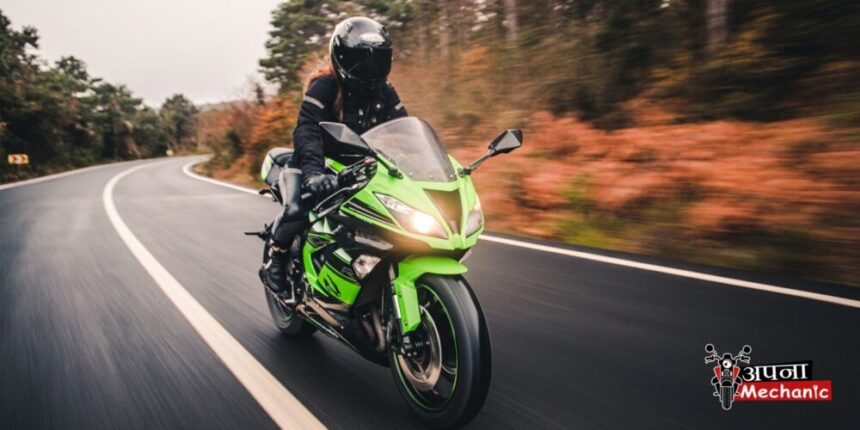Modern bikes require less maintenance than those of the 1960s and 1970s, but they still require significantly more maintenance than a car. The more you take care of your bike, the longer it will last. Performing routine maintenance on your motorcycle can also assist you in spotting any problems before they arise.
To keep your motorbike in optimum condition, you first need to get to know your motorbike. Read the owner’s manual to ensure that you understand your bike’s features, maintenance requirements, and manufacturer’s advice on how to best take care of it. A well-maintained and cared-for motorcycle will always be more attractive for you when you ride it. The annoyance of having your bike off the road suddenly can also be reduced if you have a good maintenance history and beforehand planning for the upcoming maintenance services.
Perform routine maintenance checks between scheduled services to keep the bike in top shape. These inspections also enable you to detect any warning signals before they turn into a significant issue. While our helpful maintenance advice will help you keep your bike in good shape, keep in mind that it also requires regular inspections by a skilled mechanic.
- Increase your knowledge about your motorbike
The more you know about your motorbikes in general – the better you’ll be able to detect faults and understand possible complications. Take the time to read the owner’s manual for your motorcycle. Every piece of knowledge available can be beneficial.
- Change Oil at regular intervals
Like any other vehicle, a motorcycle has to have its oil changed on a regular basis. The frequency with which you change your oil is determined by two factors: the age of your bike and the type of oil you use. Newer engines are more fuel-efficient, allowing them to go longer between oil changes. Similarly, while new synthetic oils are often more expensive, they also tend to last longer.
An oil change is usually included in a quarterly mechanic’s check-up, and for many riders, this will be enough. If you have a new bike, make sure to read the owner’s manual thoroughly. Keep in mind that your bike will use oil more quickly in the summer than in the winter. Oil filters, like oil, must be replaced on a regular basis.
Specific models have different requirements, but as a general rule, you should get an oil change every 1,200 to 1,500 miles (2,000 to 2,500 kilometers).
- Maintain healthy Brake Pads
It is critical to maintain the thickness and effectiveness of your brake pads. Worn brake pads can trigger a tragic accident. Brake pads should be replaced when they wear down to 2 mm or less.
Expert mechanics recommend that you should inspect your brake pads every 3,000 to 5,000 miles (5,000 to 8,000 km). Brake wear is mainly determined by your driving habits and the area in which you live. Brake pads wear out faster in places with a lot of slopes and frequent starts and stops.
- Check your tires
It is recommended to check your tires before any significant journey. Examine the tire for any signs of wear, such as tears, holes, and cracks, and ensure that the pressure and tread depth are within the permissible ranges.
Overinflated tires restrict the amount of contact your bike has with the road, robbing you of the essential grip. Under-inflated tires weaken the stability of your bike and make handling and braking more difficult than they should be. Use a standard pressure gauge to check your tire pressures, but only do it while your tires are cool. Hot tires that have just come off the road will read incorrectly.
- Clean Air Filter on a regular basis
Every 3,000 miles, you should clean the air filter of your motorbike (5,000km). The air filter plays a critical role in protecting your engine’s more delicate internal components from airborne dust and other particles that could cause damage.
You may need to clean your air filter on a weekly basis if you ride in a really dusty environment. In contrast, if you live in a rural location with little smog, you may be able to stretch out your filter cleanings considerably.
- Replace Coolant biannually
Your motorcycle’s engine uses liquid coolant to smooth out temperature variations and prevent damage. Every six months, the coolant should be changed. Like many other vehicle fluids, engine coolant can be depleted quickly if you ride your bike frequently and for long periods of time. Use the coolant that your owner’s manual recommends.
- Check Fork Oil
The bumps and roughness of the road underneath you are smoothed down by fork oil, and having enough fresh fork oil makes a huge difference in how smooth your entire ride is.
Outside of the engine, it is also responsible for lubricating all of the bike’s moving parts. Check the oil in your fork on a regular basis. With the correct tools, you can change your fork oil yourself, but if you’re unable to do so, make sure the mechanic does it for you.
- Maintain proper chain tension
To avoid rough gear changing and unnecessary mechanical wear, make sure your bike chain is well-oiled and taught. Chains typically last 15,000 miles (24,000 kilometers) or more with proper care, so it doesn’t need to be replaced frequently. However, checking the tension is always a good idea.
- Battery Life
The average motorbike battery has a two-year usable life. Before replacing your battery, always visit a professional mechanic. Remember that in order to extend the life of your battery, it must be recharged on a regular basis. This is especially critical in the winter, when you may not be able to ride your bike as often. Regularly charged batteries survive longer than ones that have been allowed to discharge completely.
- Take care of your Bike
Even after many years of heavy usage, following simple maintenance methods and following all of the suggestions in your owner’s manual will go a long way toward optimizing your bike’s condition. Don’t neglect the signals if the ride quality changes or the engine sounds different. Take the required action or take it to a service garage as soon as you notice the warning indications of a potential problem.




































